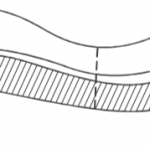KNEC KCSE Agriculture Paper 2 Question Paper / 2015 KCSE Kericho West Joint Examination
SECTION A (30 Marks)
Answer all the questions in this section in the spaces provided
Name two products obtained from a dual purpose breed of sheep.
1 marks
State four control measures of fleas in a flock of layers.
2 marks
State three reasons for washing the udder of cows before milking.
1.5 marks
Name three breeding diseases controlled through use of artificial insemination.
1.5 marks
Give two qualities of a creep feed that make it suitable for piglets.
1 marks
Give three factors inhibiting milk let down.
1.5 marks
List four signs of heat in a female rabbit.
2 marks
a) Name a breed of beef cattle with a red coat colour and a white face. (½ mark)
b) Name a breed of pig which is black with a white band around shoulder to forelegs, slightly dished snout and slightly drooped ears. (½ mark)
1 marks
State three characteristics of succulent roughage.
1.5 marks
Name one sheep breed which is resistant to foot rot disease.
1 marks
Give four characteristics of a good vaccine.
2 marks
State four farm management practices that should be carried out during the mating season in sheep.
2 marks
List four qualities of eggs selected for incubation.
2 marks
State four features of a good maize granary.
2 marks
State one use of each of the following tools/equipment:
i) Dibber
ii) Cold chisel
iii) Pipe cutter
iv) Milk churn
2 marks
Outline three functions of vitamins in the body of an animal.
1.5 marks
Give four disadvantages of fold unit system of poultry keeping.
2 marks
Name three sources of fats and oil in livestock feeds.
1.5 marks
Differentiate between pen mating and flock mating in poultry.
1 marks
SECTION B (20 Marks)
Answer all the questions in this section in the space provided
Study the illustration below and answer questions that follow.
i) Identify the implement illustrated above. (1 mark)
ii) Name the parts labelled E, F, G and H. (2 marks)
iii) State two methods of adjusting the implement above so as to plough deep. (2 marks)
4 marks
Below is an illustration of a bee keeping structure.
a) Name the parts labelled K, L, N and M. (2 marks)
b) Give two factors that affect the quality of honey. (2 marks)
c) Name the type of pests that affect bees. (1 mark)
4 marks
The illustrations below represent the stages of development of a three-host tick. Study it carefully and then answer the questions that follow.
a) Briefly explain what is happening in the following stages. 1,4,5,8 (2 marks)
b) Why do you think that ticks are difficult to control using acaricides. (½ mark)
c) Name the most common site the tick can be found on the body of an animal. (2 marks)
d) Give two examples of a three host tick. (1 mark)
5.5 marks
The illustrations below shows the sequence of wool shearing. Study them carefully and answer questions that follow.
i) Using the letter A, B, C and D in the illustrations above, re-arrange them in the correct order of following during wool
shearing. (1 mark)
ii) Give two tools/equipment which are required for shearing. (1 mark)
iii) State four qualities of good wool. (2 marks)
iv) Name one breed of sheep which produces high quality wool. (½ mark)
5.5 marks
SECTION C (40 Marks)
Answer any two questions in this section.
a) Outline uses of fences in the farm. (10 marks)
b) Describe foot rot(foul-in-foot) under the following sub-heading:
i) Animals affected (1 mark)
ii) Causal organism (s) (1 mark)
iii) Symptoms (4 marks)
iv) Control (4 marks)
20 marks
a) Give five advantages of embryo transplant. (5 marks)
b) State and explain the structural requirements of a permanent calf pen. (7 marks)
c) Explain the functional differences between a disc plough and a mould board plough used in land preparation.(8 marks)
20 marks
a) Outline causes of egg eating in a flock of layers. (7 marks)
b) State five uses of lubrication system of tractors. (5 marks)
c) Explain eight factors considered when siting farm structures. (8 marks)
20 marks



